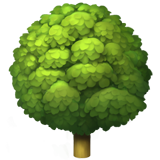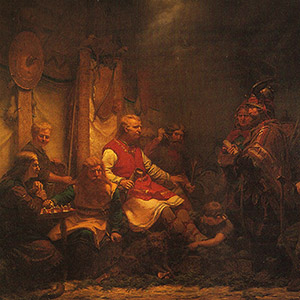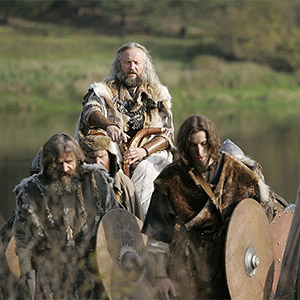|
|
|||||||||||||||||||||||||||||||||||||||||||||||||||||||||||||||||||||||||||||||||||||||||||||||||||||||||||||||||||||||||||



~ Music: Sowulo - Yule # Comments
It is now the month of Ýlir on the Norse calendar, and I am back home in Norway after having spent the fall in the US. Needless to say it was wonderful to see family and friends again, and I have been in a brilliant Yule-tide mood. 
I got a tree on my way home from work last week, a bit bigger than planned as it subseeded my 6 feet, an I ended up carrying it home and up four staircases (with my purse on one arm and battling my way through a rainstorm, it might possibly have been quite an amusing sight). But now my home is filled with the lovely smell of fir, and the fireplace is crackling along with my Spotify Yule-list playing in the background. I have been putting together a wreath to hang on my front door, making decorations, cleaning out dusty corners for the holidays and wrapping a few presents.
I picked these acorns when I was walking around the forest this fall, and the antler tips are naturally shed from whitetail deer. They make really nice decorations, especially for those of us that try to avoid using plastic and non-recyclables all that much!
Embla provided company, assistance and quality control of the ornaments. ^^
Last weekend I hosted the annual festivities with a group of friends, and we had a turkey dinner. We had lots of fun until way to late (or early if you will). It's a really nice tradition where we gather to have a large feast together instead of buying each other presents. I think it's a great idea and I warmly recommend suggesting it to your friends. I feel that it's a good way of taking back Yule from the industries that will always try to take old heathen holidays and turn them into stressful shopping-fests. 
And on that note I wish all my readers good luck with your Yule-preparations and in keeping your heads cool in the midst of the crazyness that threatens to befall some of us in the next few days. ;) # Comments
Nótt, daughter of Nörvi, is the personification of night in Norse mythology. Every night, she will ride with her horse Hrímfaxi over the sky, the morning dew dripping from his bridle. In Alvísmál (Elder Edda), Þór asks Alvís what she is called in the different worlds: 
Music: Sólstafir - Kukl # Comments

Ættfræði (family history, genealogy) from Old Norse ætt (extended family, lineage) and fræði (wisdom, knowledge, science), is an integral part of in the saga literature, across the Kings' sagas, sagas of Icelanders and Bishop's sagas. The style of writing in these old Norse manuscripts is unique in its emphasis on recording such details, and much of it is indeed pretty heavy going, with names and associations being described to some extent for most characters throughout the story. Take the first sentence in Egils Saga Skalla-Grímssonar as an example: Hon var systir Hallbjarnar hálftrölls í Hrafnistu, föður Ketils hængs..." (There was a man named Úlfr, son of Bjálfi and Hallbera, daughter of Úlfr the fearless. She was the sister of Hallbjörn half-troll in Hrafnista, who was the father of Ketil hæng...) By old Norse name tradition, people do not change last names upon marriage. Both men and women are named after their father's (or on some occasions their mother's) first name, followed son or dóttir (daughter). Some would also gain an epithet, often based on personal characteristics (more or less favorable at that). As I was born to an Icelandic mother, I am so lucky as to be part of Íslendingabók, a database containing genealogical information about the inhabitants of Iceland, dating over 1200 years back. It is a collaboration between the research company deCODE genetics and the anti-virus software entrepreneur Friðrik Skúlason. As the database states, its goal is to trace all known family connections between Icelanders from the time of the settlement of Iceland and up to today (and beyond). Numerous published and unpublished sources have been used to collect and connect pieces of information, including inhabitant registers, public documents, church records, population censuses and chronicles, books of convictions and people within specific occupations, memorial articles, lists of descendants, ancestral records and earlier publications of genealogy. It is a mind-gobbling piece of work, and one can only imagine the amount of work and dedication that has been put into it. Not only by the creators of the database, but in fact by Icelanders throughout time, who have noted, scribbled and meticulously recorded the existence and family relations of a large amount of the population and their doings. The database is named after the medieval manuscript Íslendingabók, which some of you may remember seeing in a previous post. 
I recently requested my password to the database, and was assisted by my cousin in Iceland who sent it to me. I logged on a few weeks ago, and oh, the fun I have been having! I often times feel like there are so many fields I would like to really dive into if I only had the time, and genealogy is one of them. I will honestly admit that I do not have any competence at all in this field, and the little I know is from a few research articles I have tried to digest, without grasping more than half of the terminology used. But what I do realize is that these sources can impossibly be comprehensively accurate. I even had to submit corrections with regards to a previous domestic relationship in my immediate family that was wrongfully listed as a marriage (which to my surprise was checked and updated the following day, which I guess shows flexibility and active work on deCODE's part but still causes some mistrust in their accuracy). And undoubtedly, the further back you go, the larger the risk of inconsistencies (as well as people reporting wrongful information along the way). Then we have the fact that there are only about 330'000 Icelandic citizens living in Iceland and abroad, and that many of them can trace their ancestry back to the same few families in some way. If every person has four grandparents, that makes eight great-grandparents, sixteen great-great-grandparents and so on. Going back many generations does not only mean that there must be repetitions of ancestors within each family tree for the number to be feasible, but it makes so many people that your ancestors are also shared by the people around you, merely depending on how far back you are able to look. But that being said, back to the fun! I must say there was much excitement when I was able to trace a straight line of lineal descendants back to some of the people I've read about and previosuly written about here as well. I felt my heart skip a beat as I got past a thousand years, and kept going further than I had hoped would be possible. Let me show you a couple of the longest direct lines I've been able to find! The first one is to Álof Sigurðardóttir. Her father Sigurðr, was the son of Ragnar "Loðbrók" Sigurðarson and Áslaug "Kráka" Sigurðardóttir. He was called ormr-í-auga (snake-in-the-eye) due to a mark in his left eye, as foretold by his mother before his birth. Both Ragnar and Áslaugs stories are legendary (see a previous post about their saga), with Ragnar who was claimed to have descended from Oðinn himself, and Áslaug from the Valkyrie Brynhildr and the dragon-slayer Sigurðr Fáfnisbani. Íslendingabók does however not go into these more legendary associations, stopping at Álöf who has a known year of birth in 780 A.D. Click on "expand" to see the whole lineage as listed in Íslendingabók.
The next one goes back to the daughter of Kjarvalr Írakonungr (king of Ireland), with the magnificent name of "Rafarta" or "Rafertach". And I was most surprised to see who was hiding in the midst of this line, namely Snorri Sturlusson, the author of the younger Edda as well as Heimskringla, providing us with much of the knowledge we have about Norse mythology which would otherwise have been lost.
An the search continues... ^^ I recently discovered a lineal descendance to Egill Skallagrímsson (the protagonist of Egils saga, a dubious pleasure perhaps), and several non-lineal lines (such as to Eiríkr rauði and his son Leifr heppni who discovered North-America). Reading the details recorded for many of the individuals is amazing, and sometimes sad. There are many children who died before being named, only being listed as "boy" or "girl" followed by what would have been their last name. I also came across accounts of drownings, and even murders. How will I ever manage to log off this seemingly endless source of information! I would wrap up this blog post here, but I feel there is something that needs to be said when writing about this topic. Like anything else concerning Norse history, the interest in genealogy and knowledge of ancestry is threatened by individuals who wish to drag our cultural heritage through the mud. The mere sound of the words ancestry or forefathers is sufficient to give nauseating associations to narcissistic racists who sit behind their computers in some privileged country, going on about "pure blood", living examples of what can be interpreted as failures in the school system, at the very least when it comes to biology (as well as history). These peoples interest in genealogy will mostly be concentrated on looking at photos of tall and blonde women online, feeling the need to draw lines to Norse cultural history and how everything used to be better "back then" (in a time when genders actually looked more similar, people were shorter and were likely to have grey hair before thirty, that is if they even lived beyond infancy). But in the same way as the rest of the Viking reenactment fights to "take back" Norse symbols and traditions and not let them be associated with nazism, my interest in "ættfræði" is something I will talk and write about while at the same time make it explicit that I do not suffer from the illusion that ancestry makes someone better than anyone else. It is however immensely interesting and I am learning a lot in the process! 
Photography and editing: Valkyrja.com Music: Wardruna - Rotlaust tre fell # Comments
We are now in the midst of Gormánuðr, the first winter month according to the Norse calendar. 
We are entering the coldest and darkest time of the year, the sun diminishing, leaving frost on the ground in the early mornings, and making hairs rise on the skin of Norsemen leaving their warm beds in favor of daily duties that need doing. Winter calls for new responsibilities, and much of the livestock is being brought inside for the season, demanding food and care from man throughout the winter. Daylight is becoming more precious, and must be used wisely. 
Gormánuðr is one of the few Norse months that we do not know by any other name. It's name has a practical and rather forthright meaning, with gor being the partly digested food in the entrails of ruminants such as cows, sheep and goats. The harvest of autumn has been reaped and stored, and this is the month of slaughter. Farmers have gone over their stores of hay and tried to estimate how many animals can be fed through the winter. Leaves and moss may be gathered to help the equation. 
The rest is now butchered, and the important work of perserving food for the long winter months by salting, smoking and drying of fish and meat has begun. Hopefully it will suffice. Slaughter further means that the dirty and smelly job of preparing and tanning skins is at hand, and large amounts of firewood will also be needed for the upcoming months. But as the low sun sets behind mountains of pale browns and yellows – soon to be clad in white – the rest of the work needs wait until next daylight. 
People gather inside during the increasingly long and dim evenings, open invitations for storytelling and sharing of tales over flickering flames. Women are spinning wool and weaving on looms positioned to gain light from the fire, and if someone should happen to open the door and let in the cold wind, he or she is likely to be told off for blowing out lights and causing more smoke to fill the room. In lieu of tallow or expensive wax candles (the sort you might find in Christian churces), oil lamps, often carved from soapstone, provide additional light for crafting and mending of tools, carving, leatherwork, needlebinding, sowing... There is a reason why the word for fish liver oil is lýsi (drawn from light, to illuminate), and it will continue to be called by that name for the generations to come, as a reminder of its aid to our people in accomplishing our tasks throughout winter. 
Yet, darkness and frost aside, the start of winter is not a time of gloom or discouragement. It is the time of veturnætr and disarblót: great feasts and sacrifices to greet the onset of winter and honor the feminine spirits of the dísir, our goddesses, norns and valkyries. The animals are at their fattest and there is a lot to drink. 

Raise your horns and cups for a good winter! Photography: Valkyrja.com Music: Forndom - Svitjod # Comments
Although I wouldn't mind (understatement) wearing historical dresses and gear all the time, I may sometimes be spotted time traveling in the 21st century dressed in modern clothing. It's true...! ;-P And more often than not, it will be black. Tonight I received these photos that were taken two months ago. I really like how they came out with the black and blue color tones and thought they'd be worth a share (even though it's not the sort of thing I'll usually post here). 


(Click photos for high resolution) # Comments
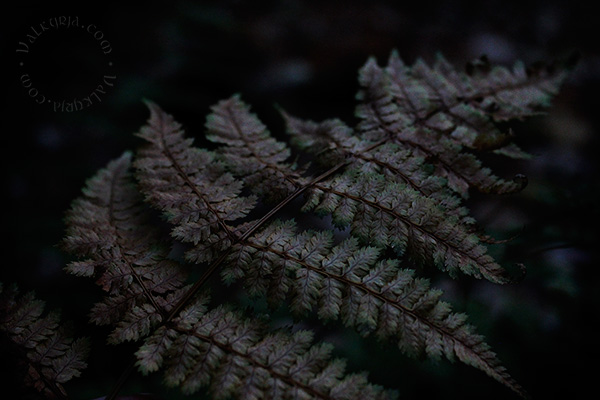








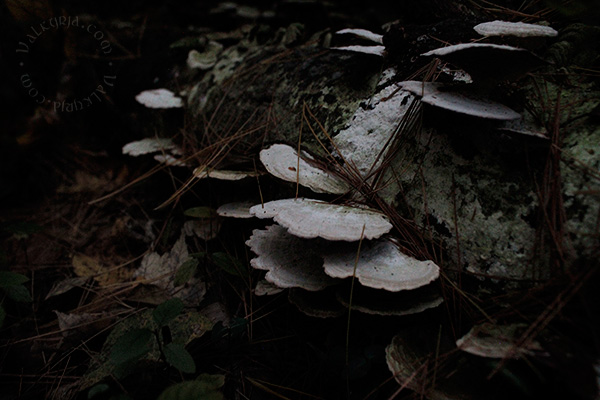











"Þessir fjórir stafir standa við öllum galdri úr fjórum áttum veraldarinnar. Ber þá á þér." (Lbs 143 8vo) • Photography & editing: Valkyrja.com Music: Wardruna - Løyndomsriss # Comments
Óðinn ek nú heiti 
Yggr ek áðan hét 
hétumk Þundr fyr þat 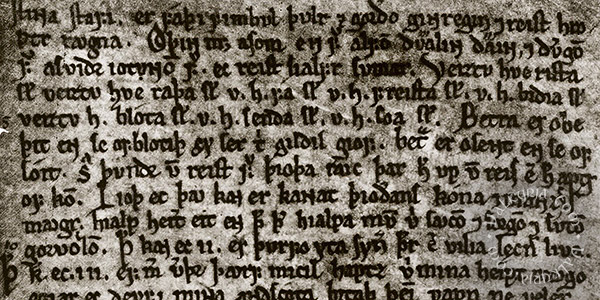
Vakr ok Skilfingr 
Váfuðr ok Hroftatýr 
Gautr ok Jalkr með goðum 
Ófnir ok Sváfnir 
er ek hygg, at orðnir sé 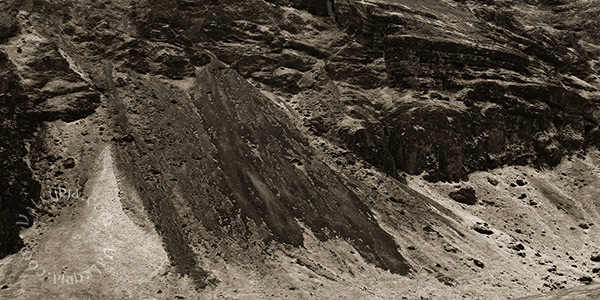
allir af einum mér. 
~ Óðinn I am now, Yggr I was before, Þundr I was ere that, Vakr and Skilfingr, Váfuðr and Hroftatýr, Gautr and Jalkr among the Gods, Ófnir and Sváfnir, and methinks, these have all come, from the one that is myself. ~ Text: Final stanza in Grimnismál, Elder Edda. Photography & editing: Valkyrja.com The music joining this photoseries is a previsously unreleased demo by Forndom. The track is called Tundr, one of Óðins many names and kennings, and the one he took after hanging himself from a branch in Yggdrasil. Published here with personal permission. # Comments
Arriving in what is my home for the next months; a wooden house in green surroundings close to Dartmouth College in the US, I checked the mailbox. And guess what had come to me all the way from Norway, with a letter from author Siri Pettersen! 
*squeeks* 
It is an advance readers copy of her newest book Evna (the Might), and is the third and last book of her trioligy Ravneringene (the Raven Rings), scheduled for release on October 28th. Since I first picked up her first books Odinsbarn (Odin's Child) and Råta (the Rot) last year, I've had my nose stuck in between the black bindings time and again. Be it buried in pillows in the corner of my livingroom, on a crowded bus on my way to work, lying in the grass during viking markets or in a tent with raindrops splashing outside; I've read them both several times over. They're already quite worn after being been carried in my bag, under my arm and my backpack, they smell of bonfires and dirt, and the dust jackets are starting to look the part. :) 
The protagonist, Hirka, is a female outcast of the society, and strays far from the classic fairy queen. I see her as having twigs in her unruly and blood red locks, and she is probably in need of a bath or two. She has the knowledge of herbs and medical plants, be it remedies to disinfect wounds or illegal back-alley drugs that will make your mind drowsy... But she lacks basic abilities that come naturally to others. Being different and not knowing her heritage, she keeps to herself and trusts few. Because people are dangerous... 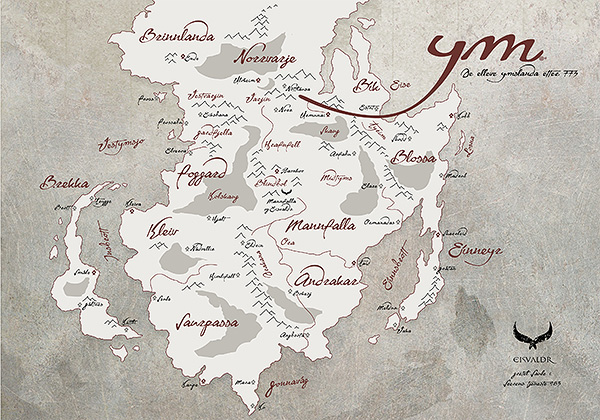
(FYI, none of my blogposts are sponsored, and I never recommend any products or concepts upon request) # Comments




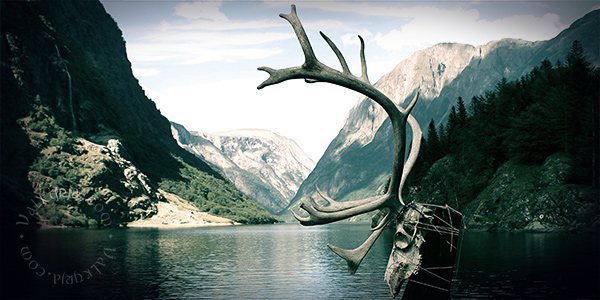

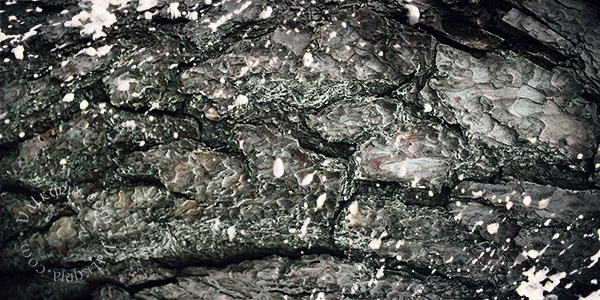

Text: Selected stanzas from Gylaginning & Völuspá Photography & editing: Valkyrja.com Music: Forndom - Urminne # Comments
• This blog post was revised and expanded in 2021. For the updated version, click here • This week we are entering Haustmánuðr, which is the sixth and last summer month according to the old Norse calendar. Haustmánuðr means the month of harvest/fall, but it was also called Garðlagsmánuðr - a name decribing that it is the time to fix up the fences and walls around the farm before the winter. As Christianity came and spread across Scandinavia, the old way of measuring time was replaced by the Julian calendar around the mid 12th century (1). But in Iceland specifically, the Christianization was a peculiar and gradual process (2-4). The old names of the months remained in the Icelandic language much longer, and the Latin names were not adopted into the common tongue until the late 18th century (5). In fact, they still exist to some degree today, much due to their link to folk tales and traditions such as the Þórrablót which is still celebrated across and regardless of religious beliefs. Most modern Icelanders will also know that the men's day is celebrated on the first day of Þorri while the women's day is on the first day of Góa, and the first day of summer remains a public holiday falling on the first day of Harpa. In Medieval Iceland, priests, law-speakers, policy makers and other administrators of the Icelandic society tried to synchronize the different calendar systems that were in use, resulting in a rich material of calendar texts. But this was mingled with basic principles from the Christian church calendar (1), and as a result, it is not clear how this system compares to the pre-Christian system in Iceland. I have drawn it up here as compared to the modern Gregorian calendar (6): 
Since that accounts for 360 days, four additional days were added to the third summer month, just before the midsummer. But with 364 days there was still need for a leap year system. So, to make up for the divergence with the solar year, an additional week was added at the end of summer every 7th year, called sumarauki (literally, "summer addition"). This is attested in a paragraph in Íslendingabók (the book of Icelanders) that can be translated to: The wisest men of the country observed from the motion of the sun that the summer moved back towards the spring. But there was no one to tell them that there is one day more in two misseris than you can count using whole weeks, and that was the reason. There was a man called Þorsteinn surtr. When they came to the Althing he walked up to the Law-hill and proposed that to every seventh summer a week should be added, to see how that would work. The proposal was implemented in law. (11). It is however deemed unlikely that the days in the old Norse calendar were counted very accurately, especially in the northernmost areas where the sun barely sets during the mid-summer months. Time was counted in weeks of (or weeks left of) summer or winter rather than with numbered days, and years were not counted by an absolute chronology. Although seemingly complicated at first glance, I do not find this old calendar to be particularly more so than the Julian or Gregorian systems, where we still use names of months based on the victories and whims of long-gone emperors, and with lengths varying between 28-31 days, leap-years and so on...
# Comments
A week and a half ago I visited Askøy Vikingmarket right outside of Bergen for one night, an hour or two from home. Askøy is one of many islands in the North-West of the city, and it is a beautiful place of majestic nature by the sea - which also makes it kind of windy... :D 
The market is held anually at Herdla, which is a place of history, being a large farm in the Viking Age and property of the king Harald Fairhair for many years, and with sources describing visits from important historical persons such as Egill Skallagrímsson. Being a rather small market the tents were arranged in a circle on the field, in the middle of which we had a feast (or a gilde as we call it) in the evening under a full moon, with Askøy viking group treating us to deer cooked underground and delicious root vegetable stew. Thank you Askøy! This handsome fellow made beautiful woodwork... 



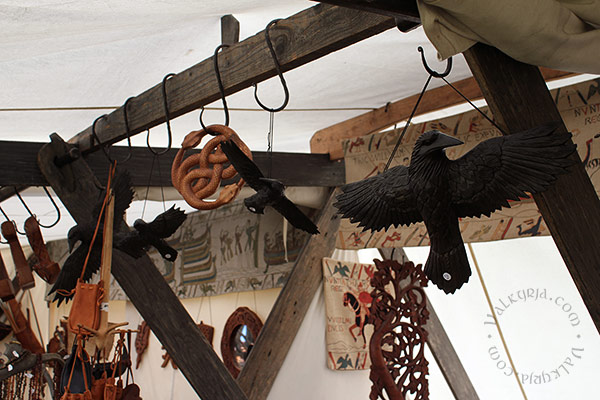

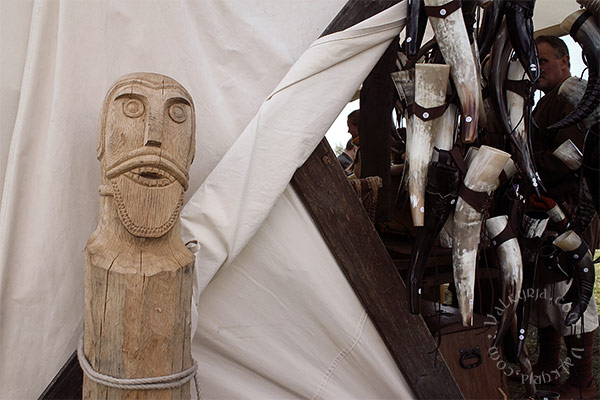
He also had this tapestries hanging in his tent, I believe this one is a compilation of various sections of the Bayeux tapestry (the original is about 70 metres long!) 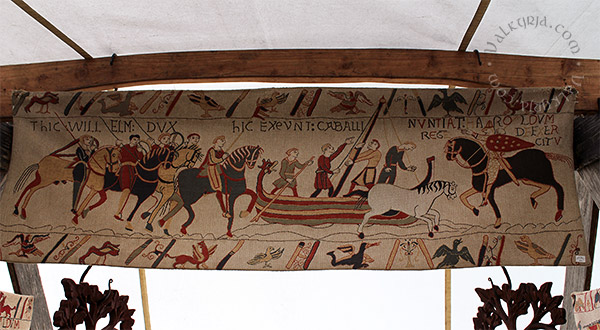
Sigrid with her plants and herbs :-) 
Sturle making soup ^^ 
Sheepskins from old wild Norwegian sheep with gorgeous handmade prints by Svanefellen. This is something different than those bleached IKEA-skins for you! 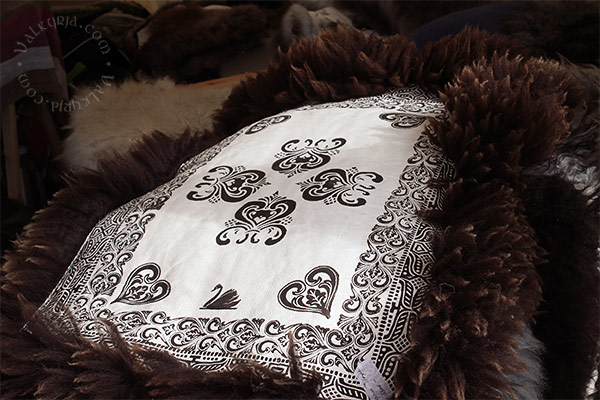

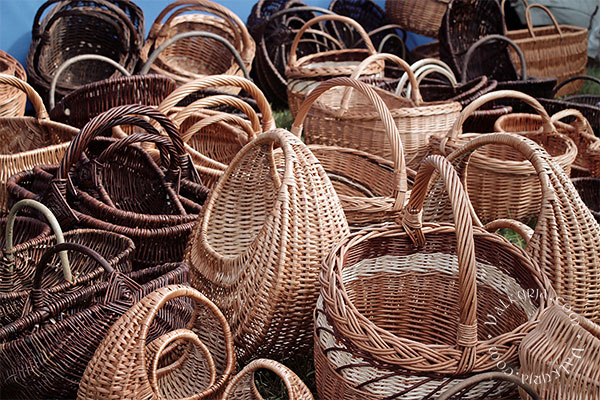

Peter the shoemaker, and some of the ladies at the market :-) 




Below you'll see Paul Rune and Magnar illustrating iron production using a clay furnace. They set a personal record this time, when they dug out a nice iron lump weighing 1.5 kg at the end of the market. Watching this always makes me think of the value of iron in the Viking Age, and how owning swords and chainmail was not for anyone. Did you know that a sword could take a month to forge, and might have been worth about 16 milking cows (give or take), like the one in Laxdælasaga? (If you read my previous blogpost you might have seen that the Icelandic capital Reykjavík was sold for the value of 60 cows, and that was half a milennium later).  
Kennet and Janne while waiting for food (with Claus looking very metal on the left). 
And finally a late night photo of the ever nice and cozy campfire (in a nifty construction that Kenneth made) 🔥 
This was the last viking market of the season for me, and albiet that is sad I have a very adventurous season ahead of me. This fall I am travelling across to Vínland (I've heard some people call it the US), for work. Although being very busy I will always find some time for reading and writing here on my free time, and I do look forward to writing you posts from a house or a garden a few hours from Boston. While the summer is normally filled with posts from markets and events, the fall calls for immersing into the world of sagas and other topics on Norse culture and history. Do you have any wishes about specific topics for blog posts? # Comments
This summer I visited Landnámssýningin Reykjavík 871±2 - The Settlement Exhibition in Iceland, where the Reykjavík City Museum had brought four of the well-preserved historical manuscripts of the Settlement Sagas out from their vaults - for us to admire with our naked eyes. The Saga literature is our history and cultural heritage, as well as the inspiration of some of the greatest authors throughout times, the oldest ones being hand printed on vellum (skins) with ink made from boiled bearberry and various herbs. And as the museum wrote: "The world of the sagas is unique and internally consistent: a portrait of a new society in a previously uninhabited land. These narratives have no parallel in world literature." ➻ Kjalnesingasaga - The Saga of the People of Kjalarnes (AM 471 4to) The saga concerns the people who settled at Kjalarnes, a region north of Reykjavík. Beginning with the story about Helgi bjóla (brother of the famous Auðr djúpúðga) who arrived from the Hebrides early during the settlement of Iceland, the saga describes his marriage with Þórný Ingólfsdóttir and their descendants as well as other early inhabitants of the area. In addition to the Saga of the people of Kjalarnes, the manuscript also contains several other Icelandic family sagas, legendary sagas and a chivalric saga. It is dated to the late 1400's, and has 108 vellum leaves buckled and bound between wooden boards, with leaves from a latin liturgical book used as flyleaves. 

The Book of Icelanders is a brief account of the Icelandic nation from its birth to about 1120, and includes the settlement, the most prominent settlers, the first laws and the founding of the Alþingi (national parliament) and the Christianization of Iceland. The original vellum codex believed to have dated from about 1200, perished or disappeared not long after this copy was made around 1650. (And look, people used to scribble in the margins back then too!) 

As the Icelandic nation grew, the need to establish laws became more prominent. The Alþingi was established in 930 (being the oldest still existing parliamentary institution in the world alongside the Jamtamót of Jämtland. While the first law code was called Grágás, Jónsbók suspended earlier laws as Iceland was brought under Norwegian rule about 1262-1264. The Jónsbók law code remained for the four succeeding centuries, and had a great influence on the preservation of the Icelandic language, as well as in shaping the Icelandic law system. Many exemplars of Jónsbók were made, and this one dating from 1320-1330 is one of the oldest to survive. 

Landnámabók tells us how travellers from Norway and the British Isles came to settle Iceland from approx. year 874. It lists the names of about 430 men and women, as well as 600 farms and accounts of the settlers origins, lands, families, animals and various vættr (beings of the Norse mythology). Much of the material in Landnámabók has been replicated in different Icelandic family sagas. The work on Landnámabók is thought to have begun around 1120, but nothing from that era has survived. Meanwhile, an unknown but skilled scribe made this paper copy sometime in the late 1600's. 



# Comments
I've collected a few photos that I've received from photographers who have been visiting various viking markets this summer, and I thought I'd add some here. How lucky to have talented photographers seeking out these events and documenting them! See below for photo credits ^^ 



Photo #1: Roy Allan Ekeblad (taken at Gudvangen Viking Market) Photo #2: Bolesław Ginter (taken at Hafrsfjord Viking Market) Photo #3 & 4: Raymond Bless (taken at Møystadsaga Viking Meeting) # Comments
This weekend I turned my nose eastward, to see my friends André and Aase Anita in their beautiful little place in the rich and deep forests of Eastern Norway. This was the third year this meeting has been held, and a few dozen of modern vikings travelled from near and far to go back in time together once again. I got picked up at the airport on Friday by Stine and Ronja, and off we went. As we got closer and the road got narrower, we were wondering whether the people following us for all this time were vikings as well. Turning around to see, I saw someone working on a large tablet weaving loom in the passenger seat in the car behind us. Yup, definitely vikings. As we arrived, our generous hosts greeted us with a large pot of lovely meat soup, and we sat under the starlit sky enjoying the night, singing folk songs and playing drums around the fire. We had a very warm and sunny weekend, with people sitting around in the grass working on and discussing historical crafts, swimming in the lake and relaxing in the shade... And came Saturday night we also had a gilde followed by a blot, with lovely goat and mead for dinner. :-) 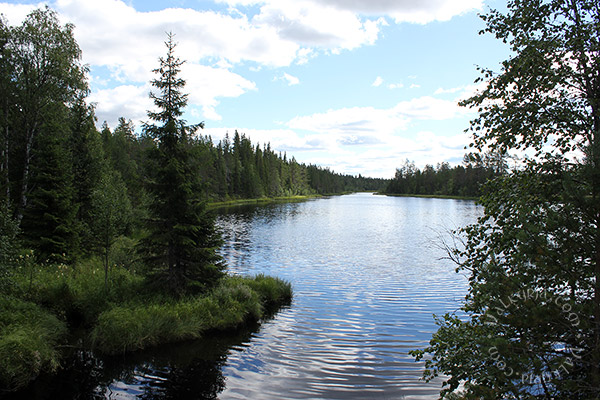

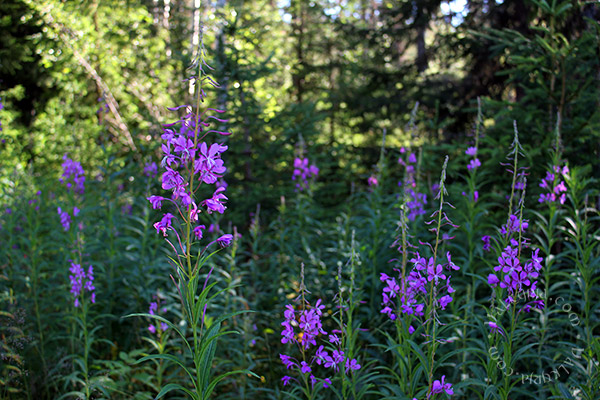














# Comments
Coming from a Norwegian father and an Icelandic mother, and being a citizen of both countries, I part of me is always on the other side of the sea. Once a year I will travel to Iceland and visit our family's farmland on the West coast, and enjoy the Icelandic nature and dramatic landscapes. When I was a child I would travel alone and stay there for the entire summer, horsebackriding for days on end, spending time with my friends (of which I didn't have that many of at home), and falling asleep to the sound of the little river running behind my grandparents house. It was an oasis for me (and still is). Nowadays I can only allow myself a couple of weeks at a time, and time has a way of flying quickly through the light summer nights in the North. I just arrived back home after what feels like no more than a few days on the other side of the pond, and although I took unusually few photos this year, I have some to show you. 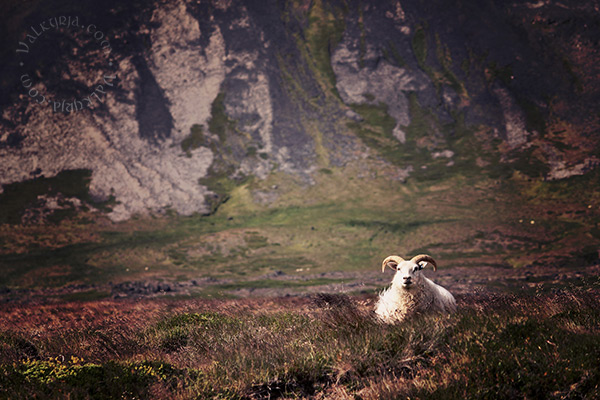


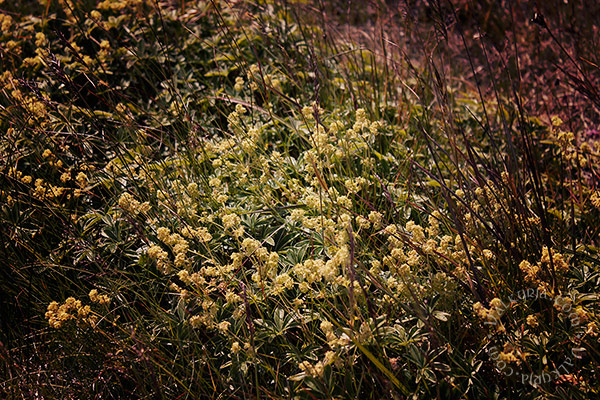



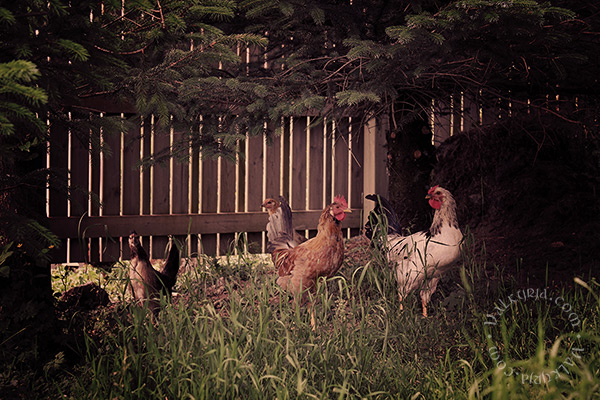





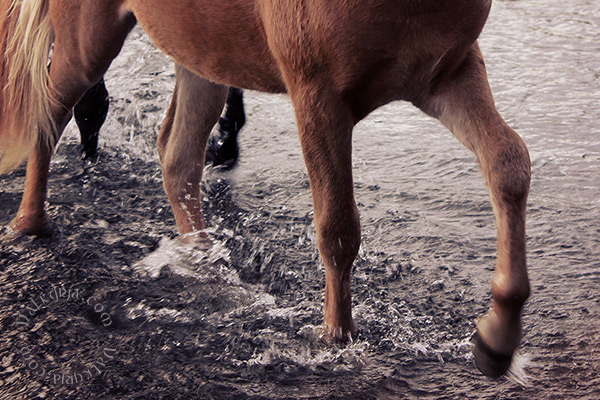
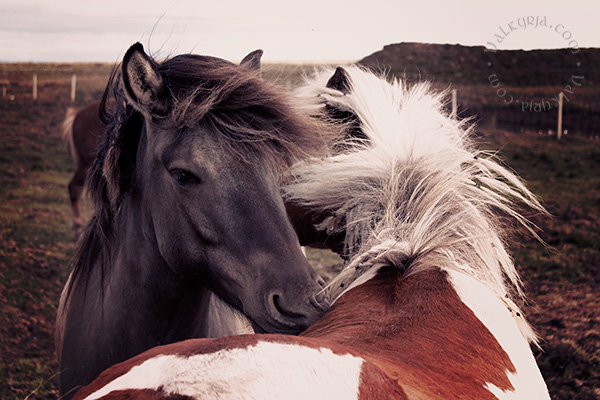

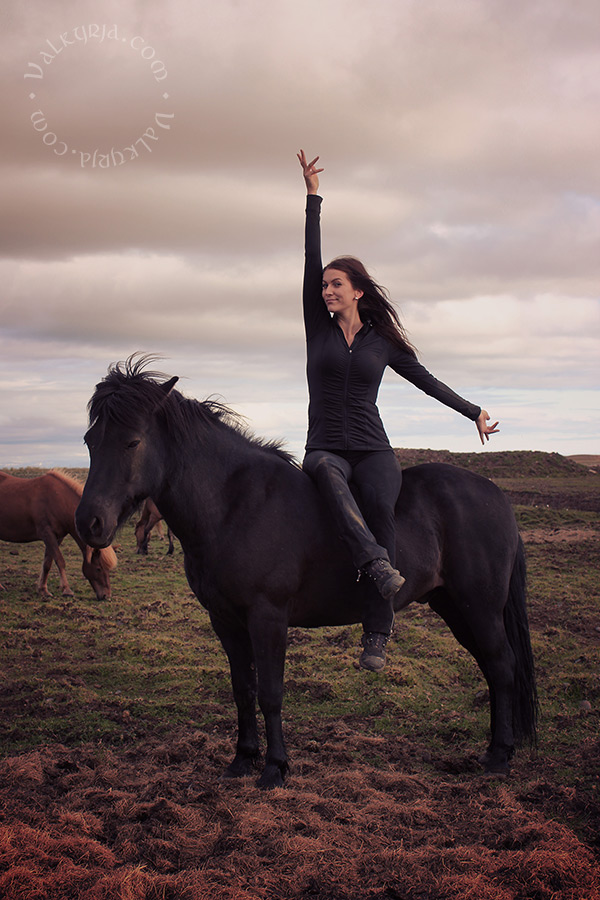










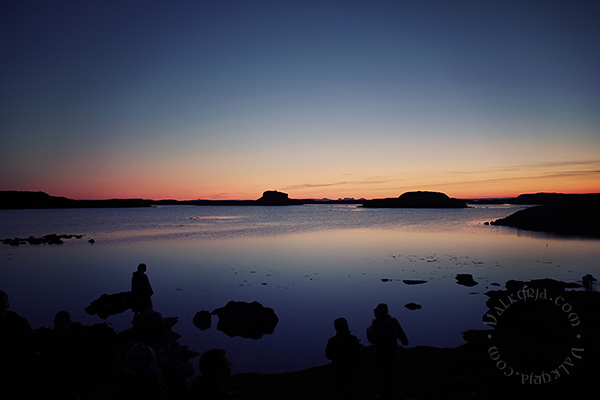


Photography & editing: Valkyrja.com # Comments
A few weeks ago I got a phone call about a very spontaneous shoot of a short movie called "Blood Brothers". My friend Enok Groven whom I know from the Viking reenactment society is a model planning to expand into acting, and he recently had his first film role in an upcoming film called Birkebeinerne together with Bjørn Nellemann. They had both attended the recent casting for the 4th season of the Vikings series in Sweden, and wanted to see if they could improve their chances by making a short film of the characters Ubbe and Ivar, sons of Ragnar Loðbrok, to send to one of the producers in Ireland. Enok had gotten the idea a few days before shooting, and however improvised it was a great cooperation of voluntary work by models, actors, fighters, choreographers, make-up artists, audio engineers, videographers, photographers and director Sigurd Aae Klausen. We met on the ground of the Horda Museum in Bergen, and people brought their own clothes and gear and shared with one another, such as the second female actor who is wearing my jewelry and clothes sown by me. ^^ I have no experience in acting (and as most people I hate watching myself on tape), which made the challenge quite intimidating. Especially when I showed up on set and it turned out that I was to play one of the main roles and had lines... But we had so much fun! I had an important meeting the same day which I wouldn't get away from, and had to take a cab from the city centre and arrive a few hours late, but make-up artists Frida Rykkje and Jannicke Helgesen made my hair in a matter of minutes and I got a rough Lagertha-inspired hairdo. 
Photographer Marius Pettersen also took some great still photos during the filming as well as some photos behind the scenes, and kindly allowed me to share them here: 








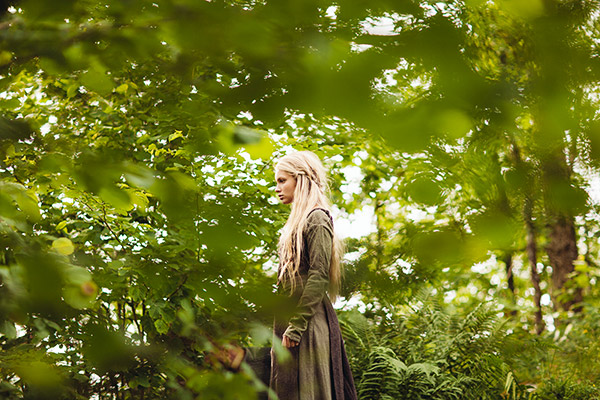










Danish man cut my throat. Hate when that happens. 


Group photo. Bjørn picks up Maria. Enok whispers humorously to me; "You know I could probably lift you up like that as well". 
I respond; "perhaps it's better I pick you up?" #tallgirlproblems 
What a fun day! That night we went out together to celebrate and abreact. We don't know yet if the film will be shown anywhere or what will come out of it, but it might eventually be sent to some film festivals. Either way we did get some really nice still photos out of it by the amazing photographer Arne Beck which are currently being edited. Looking forward to getting a look at them. And how cool would it be if Enok or Bjørn got a role in Vikings? (After all, they have already made a good start by using Einar Selvik who is also from Bergen and is singing in the soundtrack above.) # Comments
As mentioned in my previous post, I recently visited the beautiful fjords of Gudvangen. The Viking market is arranged annually by Njardar Vikings, and gathers hundreds of vikings from near and far away, in the dramatic landscape of the Nærøyfjord in Western-Norway. I arrived the weekend before the market, and throughout the week I watched people arrive one by one to put up tents with beautiful wooden and leather crafts, precious metals, needlework, weaving and yummy meats and honey. The days and nights became filled with laughter, music and storytelling around the fires. I had a wonderful time, and brought a lot of memories as well as photos back home. I ended up buying a gorgeous handmade replica of the Birka tarsoly to hang from my belt (which is also Birka) and used it to keep my money in, along with a lot of other things that made the contents of it rather scarce by the end of the market (such as a deer skull with large antlers to hang in the front of the viking-tent). 



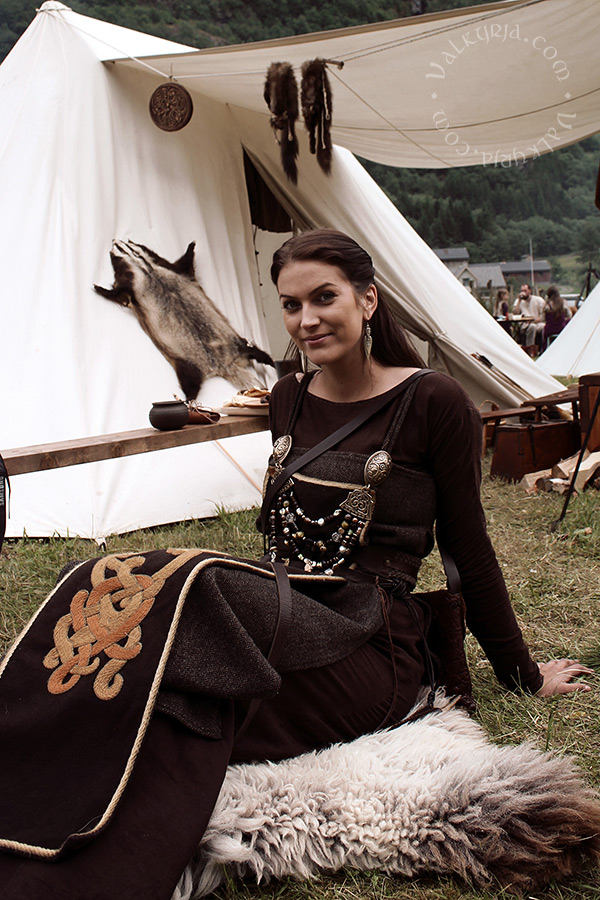











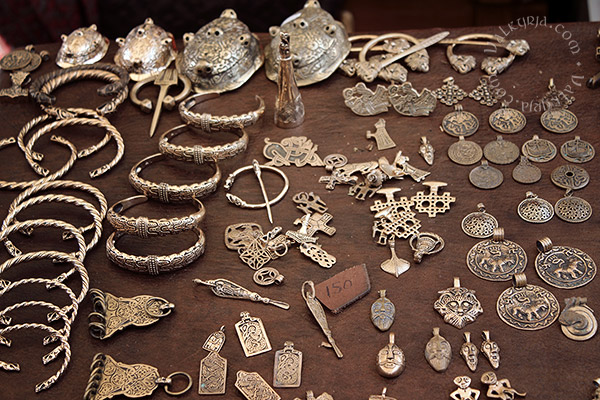











And a fine fiest it was! 

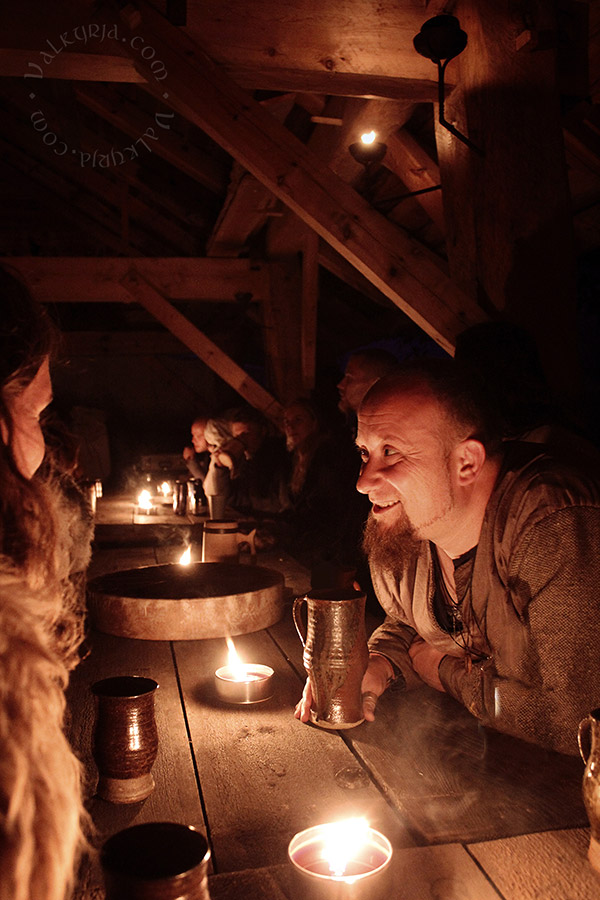



Ah, those viking market-feels... But before I knew it, and although it had been a week, time was way to short and all of a sudden the night was over and the last morning came close. I must confess that I sometimes feel like Sundays are tainted by upcoming Mondays, and that is especially true when you need to get ready to travel 1200 years forth in time... ^^ 

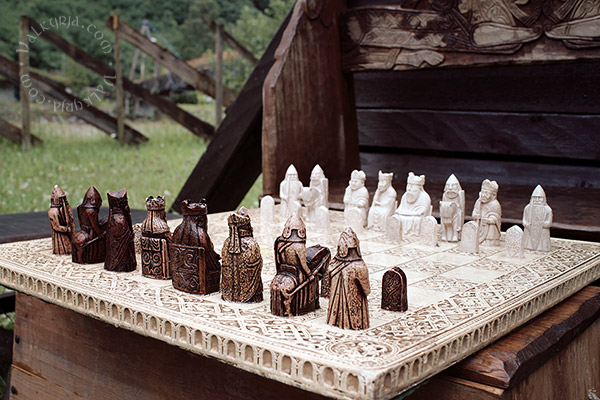

Till then! # Comments
Every summer for the last years, around this time, I will travel to Gudvangen (old Norse Guðvangr, "the valley of the Gods"), deep within a fjord in Western-Norway. Gudvangen viking market attracts people from all over the country (and travellers from outside the country as well), but usually I will be there a bit early, because a mere weekend in viking-mode feels to short for me. 
But this year I arrived even earlier, to spend some time walking in the area in solitude. In times where I need to gather energy, I crave being able to be alone, or surrounded by few people. This was just it. I took a week off work and slept in a simple Oseberg-tent (the type found in the Oseberg ship, only smaller) that I put up in the Viking camp. The days and nights were spent outside, between the tall mountains of the Nærøyfjord, wandering, exploring, and just being. I picked berries and drank from the rivers leading fresh water from the mountains into the ocean, ice cold and refreshing. I fell asleep under the open sky. I lit my fire in the nights, cooked food over an open flame, and relaxed. 













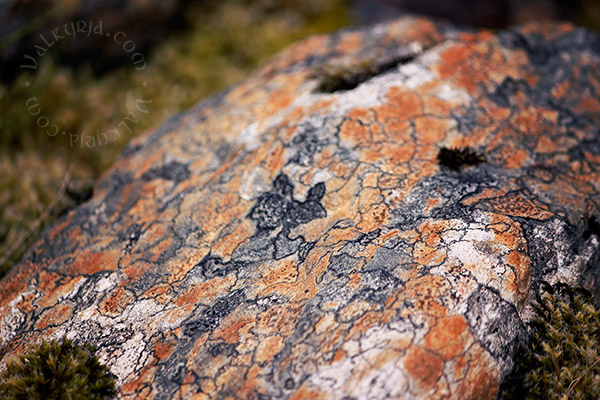
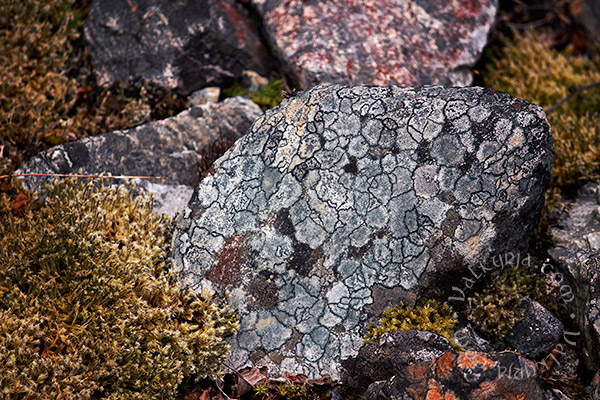


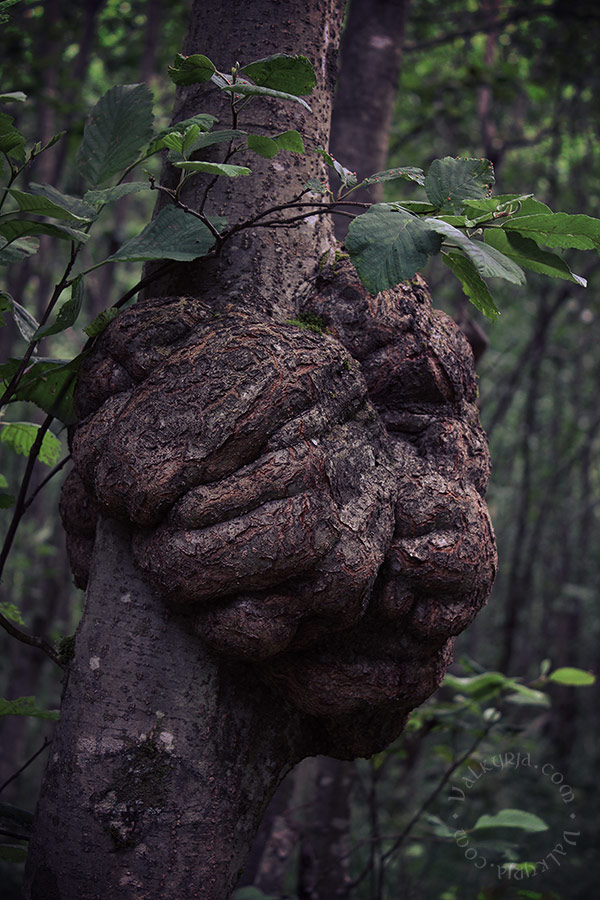
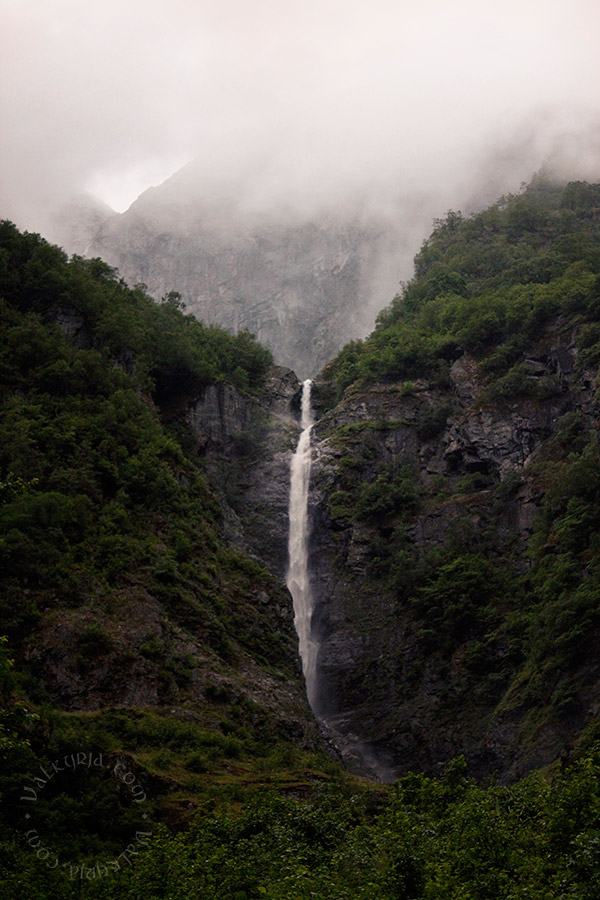



The days were spent both in solitude and with the viking friends who arrived as the days went, until at last, the camp was filled with a hundred tents with people from near and far - many of which I hadn't seen since last summer. 
My days and nights became more and more social, leading up to a large fiest on Saturday night, with an abundance of food, drinks, folkmusic and dancing. The Viking-market will become a separate post by itself, as I am currently looking through and editing some of the hundres of photos that were taken. 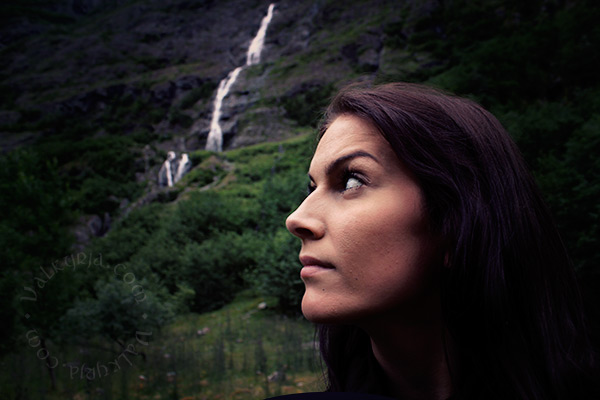
I had a good time and felt more calm and refreshed after these days. # Comments
Hávamál (sayings of the high one) is a collection of old Norse poems that were written down in Iceland around year 1270, a part of the elder Edda in Konungsbók/Codex Regius (although some stanzas can be traced as far back as the 800-900s). The poem is attributed to Óðinn, and each of the 164 stanzas contain wisdom and advice for various aspects of life, proper conduct, ethics and behavior. 

It is a translation and modification of an absolutely great post by blogger Ole Ekelund at Snarglebarf.com, describing the essence of each stanza in a new way. Even though it is brimmed with wit and sarcasm, having read through and analyzed every stanza in both Norwegian and old-Icelandic in the process of translating, I vouch for this being high-class nerdy humor. Here goes! Prepare for vulgar (and slightly blasphemic) simplification! 

# Comments
Sonr Svásaðar, sækir Norðrveg, ok gróðr vex um garði; fætr berar, fagna sumri, dansa um dögg í grasi. Sólin roðnar, skuggin kælir, dimmt um djúpa dali; ár ok fossir, ávallt renna, syngja ljúft um sumarnótt. 





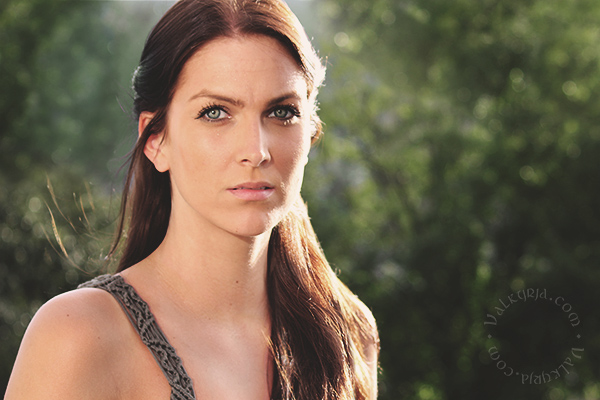

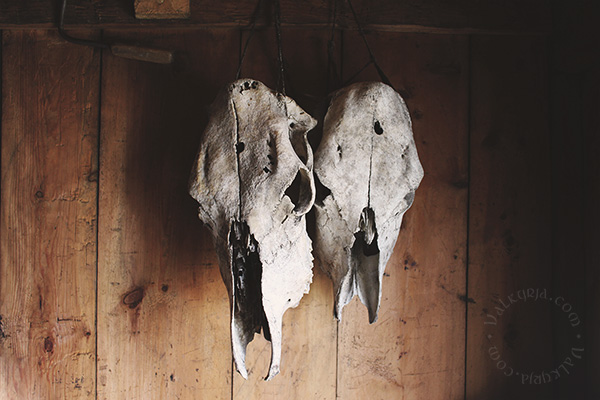


Son of Svásað, seeks Norway, growth waxing in the ground; shoeless feet, embrace summer, dancing over dew-clad grass. Sun reddens, shade chilling, darkness over walleys deep; falls and rivers, ever flowing, sing through the summer night. ⊕ Photography & editing: Valkyrja.com Norse poetry (Ljóðaháttr): Valkyrja.com # Comments
Last night past midnight I dropped an overly full rucksack loaded with my sleeping bag and skins on the floor at home, and fell asleep in my large and comfy bed. Not that I mind sleeping on the ground for a few days, but that doesn't mean I don't appreciate silk pillows either. ^^ Woke up today sort of confused to see that a thousand years had gone by, but luckily my camera was filled with memories from the weekend that had passed. 
Me and my friends Silje and Lars Christian travelled to Hafrsfjord, a rich historical area by Stavanger on the southwest coast of Norway. This is where the Battle of Hafrsfjord took place about year 872-880, where Norway was unified for the first time, under King Harald the I, known as Harald Tanglehair and later Hairfair (as he is said to have refused to cut or comb his hair until he was the sole King of Norway). His saga is described by Snorri Sturluson in Heimskringla, and although its authenticity is disputed it is in many ways a beautiful love story, as his wife Gyða Eiríksdóttir had refused to marry him until he had unified and ruled all of Norway, a rejection that he took as a challenge and succeeded with ten years later. 
The battle between Harald and the last petty kings is commemorated by the monument "Sverd i Stein" (Swords in Rock). They are based on Norwegian findings of swords, of which the tallest represents the victor Harald and the two smaller ones represent the petty kings, carved into the rock, never to be removed or used again. 
The Viking market took place in a beautiful little park with tall trees and a lovely river running through the area. We lived in the back of the market, shielded from the busiest shopping streets, with the view of the monument right outside our tent opening. 
My beautiful friend Silje! 
This was our first time in Hafrsfjord, and needless to say, we really enjoyed it! The market was very well organized, with an including and welcoming management, a neat and well thought-out market area with traders, craftspeople and other tents and bonfires mixed throughout the park, creating a living and breathing Viking atmosphere. Philip and Theresia from Donderelf walked about playing their feelgood-tunes throughout the weekend, and Gustav Holberg and Kjell Braaten also entertained the crowds with enthusiastic storytelling and music, amidst fighter shows, introductions to Viking games and an archery-competition. 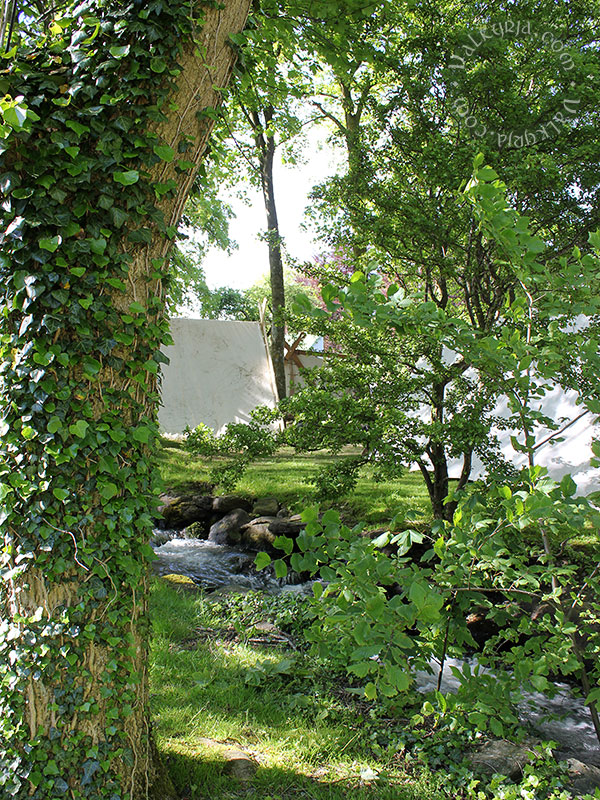




















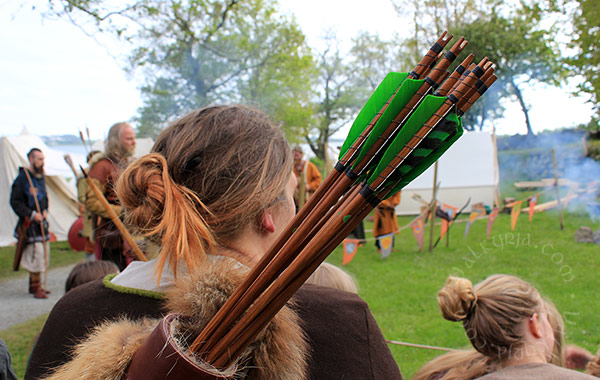
It must be said that several thousand tourists visited the market throughout the weekend, but I have tried to avoid them in my photos, mostly sneaking my camera about right before and after closing hours. Because when the tourists leave, the mood in the camp changes. However much we need and love having visitors and people interested in learning more about our cultural history, there is no denying that the atmosphere changes for the better as the last rubber boots and pink and blue plastic jackets pass the gates and there are only "Vikings" left. 





The weather was quite enjoyable throughout the weekend and mostly sunny, although the nights were a bit cold and called for woolen clothes and fires being lit throughout the camp. As the sun was lowering in the sky we made a large fire in the middle of the camp, where people gathered to eat, drink, sing and play. The hours passed, in the way hours pass when you don't have a clock or have anything planned for the day after. I counted ten drums in action at one point, and I almost fell asleep lying there on a sheepskin with my head in Siljes lap, with the warmth of the fire flickering over my face. It reminded me of the scene with the faun and Lucy from the first Narnia-book! 



And the morning after... Breakfast! 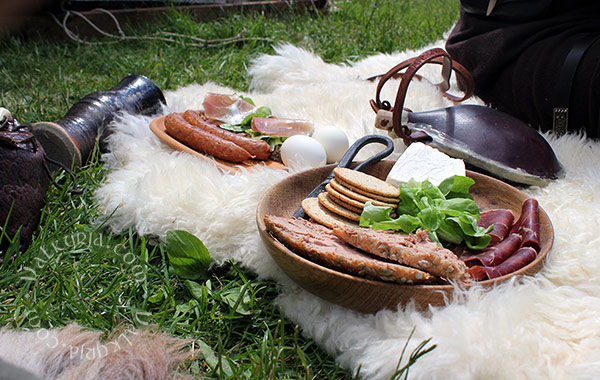

Wiesław Zawistowski and Barbara Zawistowska from Poland, with their beautiful ceramics. The ceramic jug with the wooden lid at the top right is mine now... ^^ Isn't it pretty? 



Lasse from Sweden sold claws from magpies, crows and ravens. 
Stig from Swedish Viking Kristall was also there with his jewelry. 

Liv and Lisbeth... :'D 
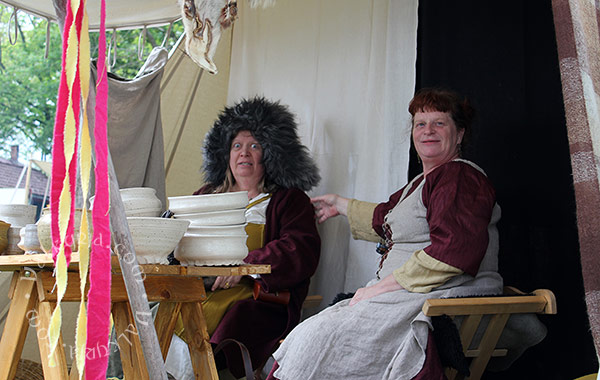
I bought some soaps from Marit Vaidla, and they smell wonderfully. 
The day we left was sunny and wonderful, and I spent the last hours walking barefoot around the area soaking up the last market ambiance before packing up and heading home for now. 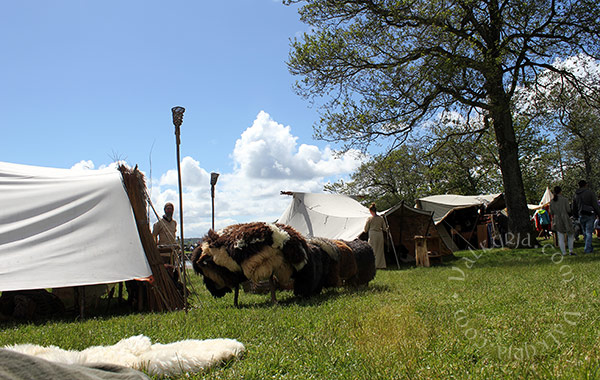



# Comments
Back home after a weekend at my first viking market of the year, feeling tired and happy. ^^ Just got out from a long shower, and finished unpacking all of the bits and bobs that are involved in viking reenactment. My livingroom is full of drying sheepskins and my kitchen is full of wooden plates, iron and ceramics, and I've got the smell of campfire in the whole apartment and moss on my pillows. Viking season is on. I love it! 
This weekends faire was Bjørgvin Viking & Medieval Market, with the local reenactment group of which I am a member (Bjørgvin is the old name of our town). The weather was shifting throughout the weekend with periods of boiling hot sun, wind (the kind that makes flatbread and money fly through the camp), heavy rain, you name it. But a certain German genious had put up a large round communal campfiretent with skins and rugs on the floor, which made us able to keep dry and stay partying all night around the fire, singing, laughing and sharing bottle upon bottle of mead and ale, while unfortunate peoples shoes got soaking wet and the grass turned into a mud pit outside. I came Thursday afternoon and stayed in the fighter-camp, where I rented a small Oseberg-tent. Nice and cozy. And waterproof! 
BTW, this is how one cuts vegetables in a fighter-camp: 
And how to lift a hot pot from the fire! 
Viking shopping! I didn't buy that much this year, but I did bring home a new wooden bucket made by Mirek, a bottle of red mead, a nice ceramic mug and, quite fittingly, a little valkyrie (replica from finding in Tune, Sweden) to hang in between my glass beads. :) 


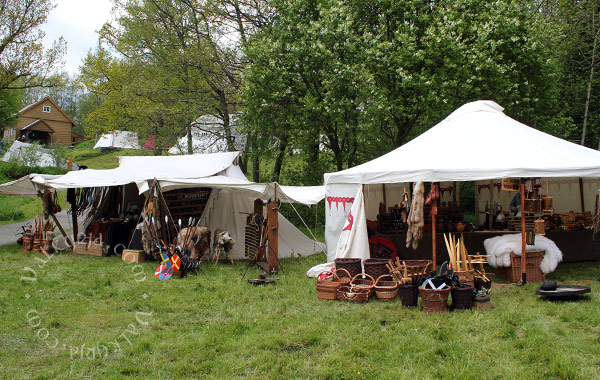
So much beautiful scenery, many happy moments and nice people to photograph! 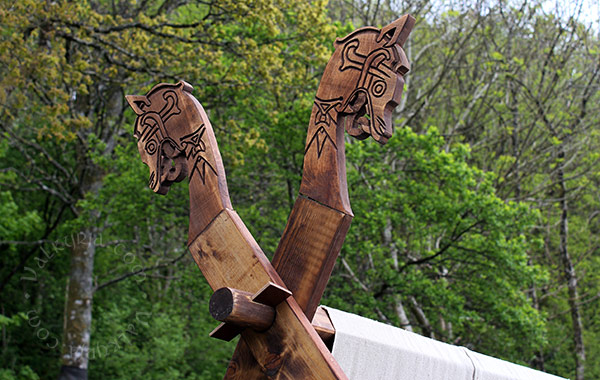

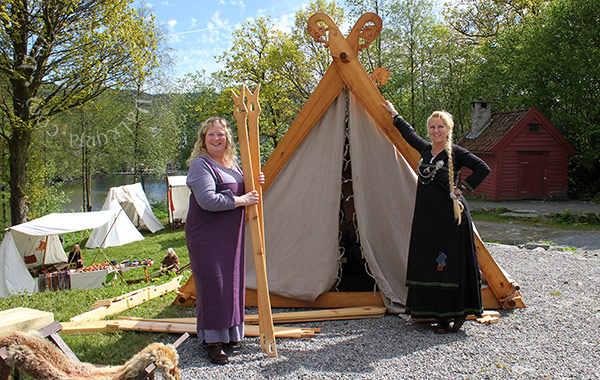





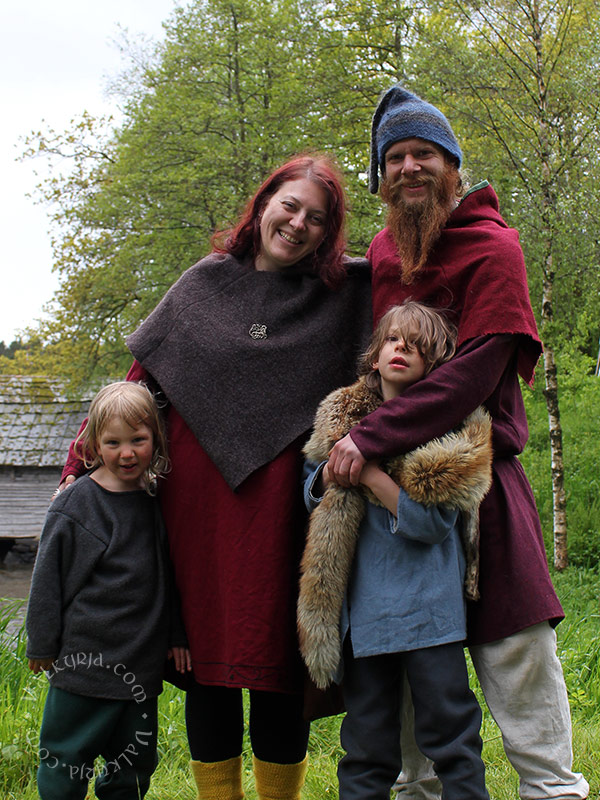



And Saturday evening there was even a wedding, when Siren and Helge tied the knot! 
"You may now kiss the groom!" 

And the party went on into the night, and the sun went down and rose again before I found my way to my tent :) 

As of now, I'm sitting on the couch drinking tea from my new mug, planning next next weekends' adventures. I'll be travelling with friends to Hafrsfjord, to visit their market for the first time. But first, a few days in the modern society... Which reminds me; time to go to bed! 
# Comments
History Channel will be launching the third season of the series Vikings this week. At one point during the first season I stopped following the show, after being provoked by an absurd episode the where Vikings travelled to a Christian stave church in Uppsala (filmed on top of a tall fjord in Gudvangen) to sacrifice human beings in a ceremony portrayed as a common Norse custom. The producers clearly felt an excessive need to draw in violence and sexual practices where it didn’t belong (heavily based on extreme and disputed accounts such as that of the single Arab traveller Ahmad ibn Fadlan, rather than on the saga literature itself), and promoting caricatures of the stereotypical Viking (which like I mentioned in another post may reflect as little as <1% of the Scandinavian population in the Viking age). Granted, this is not particularly surprising as we are talking about a television production – even one that is promoted by someone claiming the name "History Channel". Nevertheless, I decided to pick up the threads again and gave it another chance when the second season had come out last year. After all, we don’t see big productions made about the Viking culture too often, especially since we don’t seem to want to take charge of them ourselves. Also, there are many good things to say about the Vikings series, and it actually contains less graphic and grotesque violence scenes than certain other comparable series (which in fact was and is my main problem with series such as Rome, Game of Thrones, and Spartacus etc.). I eventually started looking forward to each new episode of the second season coming out, and now I am excited about the third! I do, however, take the story conveyed with a large pinch (shovel?) of salt, and I committed myself to read up on the relevant saga literature. Historical TV productions are educative in their own way and certainly do spark valuable interest in the relevant cultures of their portrayal, but I feel strongly that we should be careful not to let them leach out on the original sources and become the new references for knowledge. With this regard I would like to pass on a detailed summary of that which I've ploughed through (and now translated to English), primarily the old Icelandic Ragnars saga loðbrókar ok sona hans from Fornaldarsaga (1) but also Þáttr af Ragnars sonum from Book of Haukr (2), Danish saga om Ragnar Lodbrog in two parts from book IX in Saxo Grammaticus’ Gesta Danorum ("Deeds of the Danes") (3,4), and other related sagas elaborating the stories about the same man, who is a partly fictional and partly historical character believed to have lived in the 800s, possibly being born between 750-794.. 
But first, there is one thing that needs to be said: The other day I noticed someone referring to Ragnar's wife as "Mrs. Lothbrok". That gave me a slight desire to smack them over the head with the aforementioned shovel. ^^ Norse name practice is characterized by people not taking their spouse's name upon marriage. A man of mine would never have my last name, unless he changed his gender (as well as changing fathers for that matter). And if I fancied wearing leather pants to the point where I ended up getting Loðbrók as an epithets, it would still not impact his name (unless he also had a special relationship to leather pants). Below you will find the summary/short version (that is, as short as it gets without missing any points) where I summarize the sagas about Ragnarr Loðbrók in my own words. The sagas mention many different stories and there are some inconsistencies in the various sources, but I will make this version as complete as possible, and show you the sources along the way. And if you happen to be above averagely interested and actually bear to read this though, I have tried to make it a bit more readable for you by dividing the text into relevant sections. Let me begin with Áslaug (Kráka/The Crow), and take it from there. ➛ About Heimir og Áslaug Áslaug is mentioned both in Skáldskaparmál (5) and in the Völsungs saga (6) in addition to Ragnars saga loðbrókar ok sona hans (1), and is in many ways the central character of the latter. The story begins when she is three winters old, and tells us that her parents (the famous shieldmaiden Brynhildr and Sigurðr Fávnisbani who got his name after killing the dragon Fávni), are dead. Her foster father (and grandfather) Heimir knows that there are people searching for the little girl, and to protect her he decides to run away. He hides her along with his valuables, inside a harp of gold that was made so that he could open it. He arrives at a farm in Norwegian Spangereid, where the farmer Áki and his wife Gríma live, and asks them for food and shelter. Gríma is home alone and receives him well, but when he has settled for the night and her husband comes home she persuades him to kill the guest in his sleep, because she had gotten a glimpse of part of the treasure which stuck out of the harp, and wanted it for herself. At first, Áki did not want to do this, but Kráka convinced him by threatening to take the guest as her husband and chase Áki from the farm. He then does as she wishes and sends Heimir to Hel, and when the two open the harp (in their own clumsy way) Áslaug appears. They brood over what to do with the child, since she is more beautiful than both of them, and no one will believe that she is their daughter. Gríma makes a cunning plan to shave the little girls' head and cover her hair with tar so that is won't grow back, and let her do all the hard work on the farm. They call her Kráka (The Crow), after Grímas mother (1).
➛ Þóra Borgarhjörtr (Town-Hart) Herruðrdóttir We then hear about the rich Earl Herruðr, who has a young daughter named Þóra. She was nicknamed Borgarhjörtr (Town-Hart) because she was as beautiful among women as a deer is among the animals. Her father loved her so much that he brought her a gift every day, and there was the day that he brought her a gold colored lindworm (in Bósa saga ok Herrauðs (7) one can read about how he and his brother found this worm in a vulture egg when he rescued the woman Hleiðr, who later became Þóras mother). Þóra kept the worm in a box with a gold bottom, and as it grew, so grew the gold too. The worm grew into a serpent, and gradually became so big that it eventually encircled the entire house she lived in, biting its tail like the Midgardr serpent that coils around the earth. This lead to no man daring to come to her, except those who had to bring food for the serpent - as it ate an entire bull every day. The Earl naturally found the situation to be problematic, and sent out word that he who could kill the serpent would marry his daughter, and Þóra would get the gold that lay beneath it as her dowry (1). ➛ Ragnar kills the serpent and gets Þóra (spoiler alert?) At the same time there was a king named Sigurðr Hringr who ruled over Denmark. He had a young son named Ragnar, who was big and handsome and good with his kinsmen, but quite grim towards his enemies. He had acquired himself an army of men and warships, and came to be a famous warrior. He had heard about the words of Herruðr, but pretended he did not care. He made himself a set of strange clothes, namely leather pants and a leather jacket, which he boiled in pitch and dug down in the earth. One summer he came ashore at Gautland near Herruðs land, and stayed there for the night. Early in the morning he put on the aforementioned leather clothes and rolled around in the sand with them, took the nails out of his spear and went towards the fence that surrounded Þóras house. He struck the worm twice, and the head of his spear stuck in the serpent's body. The serpent's blood spurted over Ragnar, but his clothes protected him (against this seemingly toxic blood). The people in the house were awoken by the uproar, and Þóra came out and saw Ragnar heading away. She asked him who he was, and he sang a verse that revealed that he was 15 winters old and told about his errand to kill the serpent and save her. He disappeared suddenly and she was unsure if he had been a human or something else, due to his sheer size (1).
Þóra went back inside and went to sleep, and when the men awoke the next day and saw the dead serpent she advised her father to call all men to a big þing (assembly) with mandatory attendance, where the one who had the spear shaft which belonged to the spearhead found in the serpent would get his reward as deserved. The word reached Ragnar's ship, and him and his men went to the meeting, but kept themselves at a distance. Having measured the spearhead against everyone spear shafts the Earl eventually came forward to Ragnar, and he got Þóra in sort of a genuine Viking Cinderella way, and there was a grand wedding. They went home to Denmark and ruled there, and Ragnar loved his wife very deeply. They had two sons together, Eirekr and Agnarr, who were both handsome and big as their father, and good in sport. But after a while Þóra became sick, and died. Ragnar took this loss so heavily that he gave up his rule of the kingdom and handed it over to be controlled by other men along with his sons. He went out travelling and raiding, and continued to make victory wherever he went (1). ➛ About Ragnar and Kráka One summer Ragnar sailed his ships to Norway to meet friends and relatives, he came to shore by Spangereid. Some of the men went ashore in the morning to bake bread, and met Gríma who said that Kráka could help them with it. Kráka (or Áslaug) had seen the ships, and washed herself even though she was not allowed to. When the men saw her, they were very surprised by her beauty, with beautiful hair that reached down to the ground around her. The men were so preoccupied by her that they burnt the bread. When they came back and Ragnar heard this, he refused to believe that this woman could be as beautiful Þóra was. He asked her to come to meet him, and she was to be neither dressed nor naked, full nor hungry, lonely nor with companions. Kráka got the message, and sent the messengers alone back to the ship. The morning after she came walking to Ragnar woven into a fishnet and with her long hair hanging around her. She was eating an onion as she walked, and had a dog at her side. She spoke a poem to Ragnar and he asked her to come on board his ship (1).
Her dog bit Ragnar in his hand, and his men killed it. She then asked to leave, but Ragnar had gotten a good impression of her and wanted her to be with him. She said that he had to go on the journey he had planned, and come back for her later. Then he could see if he still wanted her. Ragnar then offered her Þóras old chemise, which was covered in golden seams, but Kráka dared not accept it, and told about her life as a peasant girl in dirty conditions. Ragnar then did as she said, and when he came back Kráka left the farmer and Gríma. But before she left she cursed them and revealed that she knew about what they had done to her foster father Heimir when she was a child. Ragnar received her well, and the same evening as they had sailed away together he wanted them to sleep together. She asked for a wedding in his kingdom first, and she got her wish. But when he tried to get her into bed again on the wedding night, she sang a verse that said that they would stay together for three nights before they had intercourse, and if she did not get to decide this they would conceive a son who was boneless. Ragnar did not care about this and did as he pleased, against her will (1). ➛ About Ragnar's sons Time passed and the two lived together well. But then Kráka became unwell, and gave birth to a baby boy named Ívarr who had cartilage instead of bones. He could not walk, but he was large, handsome and wise, and let himself be carried by his men. They also had the sons Björn Járnsíða (Ironside), Hvítserkr (Whiteshirt) and Rögnvaldr. Ragnar's oldest sons Eirekr and Agnarr had become big warriors and did well, and the four youngest sons eventually wanted, led by Ívarr, to do the same. They started off with men and ships which they had gotten from their father, and were superior in battle wherever they travelled. Ívarr felt they needed a challenge, and suggested to his brothers that they'd go to Hviteby, where many before them had tried to go without victory. They headed there, and Ívarr was carried on a shield, while the youngest brother Rögnvaldr was left to watch the ships. Nevertheless it ended by him going after his big brothers to fight, and he fell in battle. But the other sons of Ragnar conquered Hviteby and the wealth that was there, and burned down the city before they sailed away (1). In the second and shorter version of Ragnar's saga from Hauksbók (2), more emphasis is put on the fact that Ragnar's sons wanted to surpass their father and become more famous than him, which he disliked.
➛ King Eysteinn and Uppsala Eysteinn was a king who ruled in Svíþjóð (Sweden), he was malicious but wise, was married and had a daughter named Ingibjörg. She was the fairest of all women. Eysteinn was known for his blóts (sacramental feasts in celebration of the Gods), and in Uppsala there was once the biggest blót that was ever held in Scandinavia. There was a cow there, Sibilja, which was worshiped (yes, a cow), and she protected the Swedish King with her roars, noises and diabolical force. Ragnar was visiting with King Eysteinn and when they were feasting he was served a drink by Ingibjörg. Ragnar's men saw how beautiful the princess was and told Ragnar that he could not do other than to ask for her hand and divorce from the farmer's daughter he was married to (Kráka). He decided to do so, and an agreement of marriage was made. On the way through a forest on the journey home Ragnar asked all his men to remain silent about this agreement, and said that anyone who revealed it would pay with his life (1). But when they came back home Kráka sat down on Ragnar's thigh and put her hands around his neck, and asked what news he had to tell her. Ragnar denied that he was hiding anything, and when they went to bed that evening Kráka told him that she knew about his plans ("that I call news, that a king takes a wife, although some would say that he has one already"). She also revealed her identity as a princess and the daughter of the famous Brynhildr and Sigurðr Fávnisbane. She was with child, and predicted that she would give birth to a son who had mark of the serpent in his eye, and that if it happened, he was not to go back to Sweden - otherwise he could do as he wished. The boy was later born with a mark in his eye resembling a serpent, and was called Sigurðr ormr í auga (snake-in-the-eye). Ragnar stayed with Áslaug and her heritage was made known to all (1).
➛ About Eirekr og Agnarr When Ragnar did not show up in Sweden as planned, King Eysteinn and his daughter were insulted, and the friendship between the kings was over. Eirekr and Agnarr then decided to collect as many warriors as they could, to go there to ravage. Prior to the journey they got some bad omens, but decided to go anyway. King Eysteinn met them with an army three times as great, not to mention Sibilja, who killed many men with her horns, and made sounds that turned the warriors against each other and made them fight among themselves. The two brothers were the only ones who withstood, and they fought long with great honor, but eventually Agnarr fell and Eirekr was captured. He was offered mercy, and in addition to marry the king's daughter. But he sang a verse where he declined, and said that he had no mother who would mourn him. He asked for mercy for his men, but said that he himself was ready to die. But first he sent an armring with his men, requesting that it should be brought to his stepmother Áslaug. He knew that she would then grieve, and tell her sons what had happened (1). When the messengers returned to Denmark Ragnar was away at a meeting, and his younger sons were gone raiding. They brought the news to Áslaug, and spoke to each other through a series of poems. She then shed a tear, and it was colored like blood and hard as hail. No one had ever seen her cry before, and none were ever to see it again. When her sons came home, she went to talk with them, and with her she had Sigurðr Snake-Eye, who had become three winters old. They first told her about Rögnvaldrs fall, and then she told them of the death of their stepbrothers. She impelled them to go to Sweden to avenge them, and said that she would help with anything she could. But Ívarr took the word for his brothers, and said that he refused to go to Sweden and fight against the sorcery that was there. There were some harsh words exchanged between them. Then little Sigurðr broke out in words of a poem, and said that he could not speak on behalf of the others, but that he would go with her, and overcome Eysteinn. Áslaug thought very well of her youngest son, and the elder brothers began to change their minds. Björn and Hvítserkr said that they could well remember their stepbrothers, and now they wanted to chop the ice that lay around their ships that had been frozen in, and sail out to avenge them. Ívarr then took the word, and said that he had also changed his mind. He wanted to join, because his head could lead the revenge, even though his hand could not (1).
They then started supplying the ships and collecting men, and this process went very fast. After one week they had five ships on behalf of Sigurðr, Hvitserk and Björn had collected thirteen ships, Áslaug ten and Ívarr ten. Ívarr had also sent an army by foot. Áslaug went with this army, and she changed her name to Randalin (1). According to the version in Hauksbók (2) there were 1500 warriors on foot and Randalin wore warrior clothing and was their leader. The warriors went both ways and met at the agreed place in Sweden. There they killed everything and everyone in front of them, in a barbaric manner. King Eysteinn collected as many men as he could find to meet this army (1). They took Sibilja, whose noise and sorcery again attempted to overpower the enemy. But Ívarr asked everyone to make as much noise as they could, with loud cries and clinging of weapons, to drown the noise of the cow, and he asked to be carried in front of the army and thrown against her. He shot her in both eyes with arrows from his bow, and when they threw him he was light as a feather. But when he landed on her back, he was as heavy as a rock, and broke every bone in her and that became her death. King Eysteinn fell, and the brothers had victory. They then gave mercy to those who were left, and Randalin went home with some of the warriors while her sons would to fare to the Southern Kingdom to find some greater power to fight against. Little Sigurðr went with them (1). Regarding King Eysteinn and his kingdom in Sweden there is a significant difference between the two versions of Ragnar's saga that is worth mentioning. In the version from Hauksbók Ragnar's sons went raiding against their fathers will, and took his "tax land". In this version, King Eystein was a king under Ragnar, whom he had appointed to govern Uppsala and protect it against his sons (2). After Eysteinns fall the sons of Ragnar went to a castle named Vífilsborg named after the chieftain who ruled there (1). He and most of his army was not at home, but the brothers still did not succeed in taking over the castle, even though they camped there and tried for half a month. The men who were in the citadel teased and taunted them, and showed off what wealth they had over the castle wall. This affected Ívarr so badly that he became very sick, but then he gathered his brothers and all the wisest men to put together a plan. They snuck out into the woods at night to fetch firewood and burn the chalice in the castle walls. After doing this, they attacked the wall with trebuchets and broke it up, plundered and ravaged, and travelled on. When they had been through practically every fortress and castle throughout the Southern Kingdom, and had become so famous that there was not so much as a child who did not know about them, they decided not to stop until they had reached Rome. These plans were however changed after they met an old wanderer, who told them that the distance there was so long that he had worn out two pairs of iron shoes on his way.
➛ King Ragnar's death in England All of this time Ragnar sat at home in his kingdom without knowing where his sons or wife has gone. He heard nothing but others boasting on about them and how no one could compete with them. Ragnar thus began to wonder what he could do to surpass his sons, and ordered the building of two ships that were so large that there were none equal. People around the whole kingdom were asked to arm themselves, and understood that he was planning some sort of big overseas journey. Rumors spread around the neighboring countries, and both king and layman feared what would happen. Then Randalin came home, and Ragnar told her that he was thinking about going to England. Randalin thought it was careless to travel with only two ships, and she also believed that it was wrong to use knarrs (trading vessels) instead of longships if one was to go to England. Ragnar still wanted to do it, because a victory would not be regarded as spectacular if he had many ships. When it was time for parting, Randalin said that she wanted to repay him for the chemise he had given her when they met, and she would do so with a tunic woven by gray hairs, a costume that was divine and blessed by the Gods. It was very clear that the farewell affected her deeply (1). Both Ragnar's ships were wrecked on the way to England, but the men managed to come ashore with their weapons. The King who ruled over England at the time was called Ella, and he had heard about Ragnar's arrival and asked all the men to get ready for battle, but that they were not to kill Ragnar, for he had sons who would never let them get peace. When the armies met it was clear that Ragnar was outnumbered. He had no armor, but he had a helmet, and was dressed in the clothes that he had received from Randalin, and he had the spear that he had used when he killed the worm to get Þóra. With these things, he was the only one on his side who survived the battle, and he was captured by King Ella's men. When he was taken into captivity he refused to talk or tell anyone who he was, and Ella punished him by throwing him in a snake pit, where he sat very long. But the worms did not bite him, before Ella asked them to strip him of his outer garments, and then they were soon all over him. Before he died, he sang two verses, including "never I thought that snakes would be my ending; often a man encounters, what he least expects" (1). In the older skaldic poem Krákumál from the 1100s (8), there is a much longer text with 29 verses of 10 lines each. It does not match the two verses from the saga and provides descriptions of many more events and battles that probably have roots in earlier accounts of Ragnar, that are now lost. It is written in the first person and concerns Ragnar's memories of his life, which he reads as the snakes are chomping at him, and his desire to be picked up by Valkyries and brought to Oðins halls. The poem ends with "læjandi skalk deyja" (with laughter shall I die).
➛ Ragnar's sons and King Ella Ragnar's corpse was carried away, and King Ella was very worried about how his sons would take these news. They were however on their way home again after their own long journeys and were struggling to find food on their way, because everything and everyone fled before them, and took their riches with them as they escaped. They came all the way home to the Danish dominions before the news of their father's death reached them. When Ella's messengers arrived and gave them the news they all responded in very powerful ways. Björn held on to his spear-shaft to firmly that his hands left marks in it and trembled so hard that it broke in two. Hvítserkr, who had been playing tafl when the news arrived, held so hard onto the piece that blood was running from his nails and Sigurðr did not notice that the knife he had been holding in his hand cut him all the way into the bone. Ívarr was on his part mostly preoccupied by inquiring carefully about what had happened, and was swollen by the anger that he kept inside his chest. But he made is so that the messengers could travel safely back to Ella, where they told the King of the various reactions of the brothers. Based on this Ella told his men that he feared the most for Ívarr. However, back home in Denmark Ívarr protested his brothers’ wishes for revenge, and said that he would rather let King Ella give penance for the murder of Ragnar. He would therefore not give his support or his ships to the revenge mission the brothers were planning, with the exception of one ship. The other brothers nevertheless collected all the men they could, and they travelled together to England. Ívarr came with them, but did not join the battle, which ended by his brothers having to flee. But Ívarr wished to be left with King Ella and see what penance he would give him. The brothers parted. Ívarr made a deal with the king that he would get a piece of land in England that was only as big as a cowhide could cover, and swore then that they should not contend with each other. But cleverly, and by making long straps of leather's from the various parts of the hide, he got a very large area, where he built a large and famous castle that was called Lundúnaborg (London town). He got many friends in England, and provided them as well as the King with his good advice and assistance. But it was all part of a cunning plan, and he bought the most powerful men in the country so that they would not assist King Ella, while at the same time he sent for his brothers to bring such a large and invincible army as they could muster (some sources claim that this was what was later known as "the great Heathen Army"). It was a long and hard battle, but Ragnar's sons prevailed and the king was captured. Ívarr decided that there should be made a blood eagle on the Kings back, and he suffered a very painful death. Ívarr went on to rule England, while the other brothers took over the kingdom which they had owned together (1).
➛ Towards the end of Ragnar's sons Ragnar's sons went raiding in many countries: England, Valland, Frakkland (France) and Lumbardi (Langbardarland, Italy) (2). Hvítserkr, Björn and Sigurðr distributed the lands which they ruled between themselves (2), and after this they kept mostly to themselves and fought separately in different countries (1). The former ruled Reiðgotaland and Vindand. He was later overpowered when he was raiding in the east, and when he got to choose his own death, he chose to be burned alive. Björn controlled Uppsala and all of Sweden and produced a large family. Sigurðr ruled Selund, Skáne, Líðandisness and a large part of Uppland (2). From him came also a large family, and his daughter Ragnhild was the mother of Harald Hárfagri (Hairfair), who united Norway into one kingdom. Ívarr ruled England until he died peacefully, and by his own desire his burial mound was made where he could watch over and prevent enemies who came into the land from prevailing. It was made so, and he reportedly prevented invasions there until Vilhjálmr bastarðr ordered to have him dug up and burned the corpse. Randalin lived until she was old. When all of Ragnar's sons were dead their warriors spread east and west, but none of those who had fought for them had respect for other chieftains. It was also said that some men who came ashore at Munarvágr by Kattegat after the death of the sons, walked into the woods and came across an old and mossy wooden figure that was forty cubits high. It told them that it had been raised by Ragnar's sons, who had come by the sea and made sacrifices to him for the course of battles (1). ➛ But what about Lagertha? In the Vikings TV-series, we encounter a very important character, which is not discussed in the Icelandic saga about Ragnar, namely the shieldmaiden Ladgerd (Lagertha). But according to the Danish story (3) she is Ragnar's first wife from before he met Þóra, which creates a certain discrepancy between the two sources (in Ragnar's poem in fornaldersaga, he was only 15 years of age when he met Þóra, and it is difficult to imagine him being married and having had children before that time). But the story of Lagertha is nevertheless very strong and represents the introduction to the story. It was when Swedish King Frø had killed the Norwegian King Sivard, that Frø put the women of the Norwegian royal family in a brothel, in order for them to be abused and publicly humiliated. Sivard was Ragnar's grandfather, and when Ragnar heard about this, he came to Norway to avenge him. The women, who had either been abused or were in danger of becoming so, joined Ragnar's men, dressed as warriors and fought alongside them. One of these women was the shieldmaiden Lagertha, and it is described that she had a man's courage in her chest and she fought in the first line with her hair flowing around her shoulders. After the battle was over and Ragnar had avenged his grandfather, he admitted to his men that Lagertha had saved his life and that she was to thank for the victory.
He later proposed to her, something she didn’t like. She sent him a deceitful answer and let him have false hopes. She then placed a ferocious dog and a bear in her hall, to protect her chamber from this zealous man. When Ragnar came to her he killed one of the animals with a spear and twisted the throat of the other, and that was how he gained Lagertha's hand in marriage. Together they had two daughters (names unknown) and a son Fridleif, and they were together for three good years (they kept quite busy, in other words). But he did not feel that he could rely on his wife (since, after all, she had tried to kill him when he had come to court her) and he later left her for Þóra (3). ➛ Further events described in Gesta Danorum From there, the story continues quite similarly to that in the Icelandic saga discussed above, except that instead of Þóra receiving only one lindworm from her father, there were more, and they had taken over the area and become a nuisance for the whole country with their poisonous breath. In this version Ragnar had gotten his foster mother to make him a woolen cape and furry leather pants, which protected him against the snake bites and made Herruðr give him the nickname Loðbrók. Another important difference is that he in this version had the sons Radbard and Dunvat with Þóra, and these got brothers Sivard, Björn, Agnarr and Ívarr, but it is uncertain whether any of these were attributed to Áslaug as they are in the Icelandic saga (1). But when Ragnar came back to the Danish dominions with his then new wife Þóra they encountered problems, as his kingdom had been taken over by a man named Harald. Ragnar sent word to Norway asking for help. Lagertha's love for him was still strong, and she travelled with 120 ships to rescue him, along with their son and her new husband. In the great battle that followed Sivard was wounded, and Ragnar's men were disheartened. But using great courage and a cunning maneuver, Lagertha managed to overcome Haralds men, who consequently succumbed and had to flee. When she came home from battle she killed her husband with a spear which she had hidden under her tunic, and acquired all his power and wealth, for she found it better to rule the dominion without having to share it with a man (3).
I will not go further into the Saxo Grammaticus's Deeds of the Danes (3,4), but there is a great deal of additional information and more inconsistencies with Ragnar's saga that emerge from this source, and it also mentions a wife called Svanloga as well as additional sons named Regnald and Ubbe. In addition to the artistic liberties one must expect from a television production, the Vikings series might just as well choose to focus on alternative sources rather than to stay within the specific saga (such as the French annals which describe the character Reginherus in the Siege of Paris, who some have claimed could be about the same man). In other words it is hard to say where the story will take us in the third season - the numerous sources and information about Ragnarr Loðbrók appear inexhaustible, and his bloodline continues all the way to the people wandering the streets today. But nevertheless, you do now have an overview of the actual saga of Ragnar including relevant contributions from the closest related sources, and unless this post completely scared you off, I would encourage you take a look into more of the sagas. Our cultural heritage has given us great wealth and there is always more to read up on...! Music: Wardruna Sowelu Sources:
# Comments
I'm really fond of the singing and especially the fiddle sequence nearly midway through the song above, "Battle of Brothers", produced by composer Trevor Morris for History Channel's series Vikings. I thought it was somewhat difficult to hear the lyrics properly, but ever since I heard it in the background during a violent battle scene at the beginning of the second season, I was pretty sure it concerned my namesakes, the valkyries. I wrote to Einar Selvik about this, and it turns out that he is actually the one who sings and has made large parts of the track (this is undeniably quite typical, me falling in love with a song and then of course, it turns out to be Wardruna)... The text is made out of small sequences and verses from Darraðarljóð (Song of Darraðar), a chapter in Njáls saga. It describes a vision of 12 Valkyries weaving the outcome of a great battle that took place near Dublin in year 1014. This Norse poetry is both beautiful and horrendous, and draws parallels to the way the norns Urður, Verðandi and Skuld (representing the past, the present and the future) sit by the well of Urðr by one of Yggdrasils roots, weaving the long threads of destiny for every human, cutting the thread when a life is over. The sixth verse from Darraðarljóð, which is featured in its entirety on the track, reads as follows (Norse on the left, with my own translation on the right side based on modern Icelandic).
Beautiful, isn't it? I find Norse mythology to be so captivating... I'll spare you the more grotesque details of the Valkyries' web for now, but if you are interested you will find the Norse text as a whole provided in the link below.
or the Song of the Spears). In Njáls saga. Photography & editing: Valkyrja.com. # Comments |
 
|
||||||||||||||||||||||||||||||||||||||||||||||||||||||||||||||||||||||||||||||||||||||||||||||||||||||||||||||||||||||||||
|
|||||||||||||||||||||||||||||||||||||||||||||||||||||||||||||||||||||||||||||||||||||||||||||||||||||||||||||||||||||||||||
























